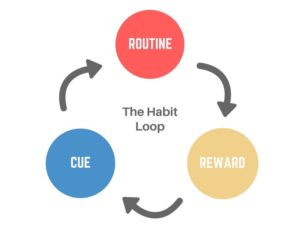If you coach your child in athletics, you know from experience the added struggles and stress that go along with that dual-relationship.
There are many highlights such as being able to see your child improve, being there for them at practices and games, and seeing them interact with their peers in a way you might not otherwise be able to witness. A study by Weiss & Fretwell, 2005 concluded that in youth soccer coaching your child was found to be beneficial for the parent as well as the child.
Although there can be many added benefits to coaching your child, there are also challenges, arguments, and difficulties; especially as they get older. Poor practices and games are carried home to the dinner table, the child might become upset with the parent’s coaching style and not want to speak to them, or the parent provides either too much attention or not enough attention at practice to either be harder on the child or to not seem like they are providing an unfair amount of attention to their child for the other player’s sake.
Youth sports thrive because parents offer to coach. The problem is that some athletes put a lot of pressure on themselves to perform well for their coach, as well as their family members who support them and watch them compete. When an athletes’ parent is also their coach, the athlete adds more pressure on themselves to succeed because letting their coach down means also letting down a parent. The idea of failure becomes even scarier.
Not only does the coaching parent see the athlete as their player, but they also see their child. What parent doesn’t want their child to succeed? So, maybe as a coach you become harder on the athlete who is your child, out of love. Or out of fairness so that the other players don’t feel like you are giving your child preferential treatment. As a coaching parent it seems like the correct choice, but in reality, it may be driving a wedge in the relationship with your child.
The issue here is that the child may feel their coach/parent is treating them unfairly and is hurt by the higher expectations and feel they can never measure up. This disrupts their confidence in their abilities, jealousy and resentment towards you and their teammates for how their coach/parent is treating others, and comparison of other players (which is never healthy).
If you are a parent/coach you probably can relate to many of the above scenarios. Practice bleeds into home life and there can become a drift or a wedge between you and your child. You are trying to do what you think is best for them, and you aren’t faulted in that! There are, however, different strategies that you can implement to help your child differentiate seeing you from coach and parent.

Here are some examples:
1) Establish expectations and boundaries.
Before you decide to coach your child have a discussion about what it will look like or what will be expected. Tell your child your role as the coach and the specific boundaries that will happen so that neither you nor your child will be confused about your role as coach and how that will change the dynamic of your relationship during practices and games.
2) Have your child tell you if they need you to be their coach or parent.
Let them know that you are going to allow them to tell you if they want to be talking to you as their parent or as their coach. Do not make that decision for them. There will be times that the coach role is more appropriate (like in games and practice) and times the parent role is more appropriate (like at home or after games.) Let your child tell you if they want to process practice or a game with you instead of your choosing.
3) At home, leave the sport-talk and coaching to a bare minimum.
Instead of bringing up practice drill or critiques at the dinner table or whenever you want to discuss it, tell your child that you will try your best to not bring up discussions about practice unless your child wants to. This will provide your child a “safe place” to avoid being criticized and instead be able to unwind and discuss other topics besides practice and games.
4) Emphasize to your child what role you are coming from.
When you are discussing something with your child tell them what role you are in. Sometimes the child may not know and if you are critiquing them at practice they might see you in the parent lens and become frustrated and upset. If you pull them aside and tell them you are coming from the coach role they will more likely to listen and manage their emotions.
5) Wear or do something to assist your child in perceiving you in each role.
There will be times that you might tell the child what role you are coming from and do everything the best you can to differentiate the two different roles for your child and it still falls flat. At times it is best to wear something that will help the child visually see you different, thus seeing you in each role. For example one of my mentors wore a hat with his kid when he was the coach but took it off when he was parenting. When you are speaking from the coach role put the hat on and take it off when you are speaking from the parent role. This visual will help your child differentiate what role they are seeing you from.
6) At practice, give them some space.
Sometimes your child simply does not want to be critiqued by you at all. As a parent, this is challenging because you want the best for your child and you want them to improve. From a coaching standpoint, this is also frustrating because you want to provide feedback openly to your players. In order to preserve the relationship with your child at home, it might be best at times to allow your assistant coach to be the main coach or person to deliver feedback to your child instead of you. Or another thing you can do is tell your child, “Hey I noticed something that will help you with that drill, let me know if you want to hear it.” This way you are still being the coach and providing feedback, but you are giving your child the autonomy to choose whether or not they want to hear and apply it.
7) Remind them that you love them and you enjoy watching them play, regardless of the outcome.
There will be days after practice and games that your child might become upset with you and not want to talk to you. It happens no matter what you do at times. Your child is putting added pressure on themselves by having their parent be the coach and they feel terrible if they do not meet your expectations. This is when you need to lower the expectations and remind them that even though you are their coach, you are their parent first. This means that no matter how they play you love them just the same. Tell them that what brings you the most joy is being able to watch them play, not the outcome of the game.
———–
If you are still wondering whether or not you should coach your child, read more about the pros and cons here.
Weiss, M. R., & Fretwell, S. D. (2005). The parent-coach/child-athlete relationship in youth sport:
Cordial, contentious, or conundrum? Research Quarterly for Exercise and Sport, 76 (3), 286-305.








